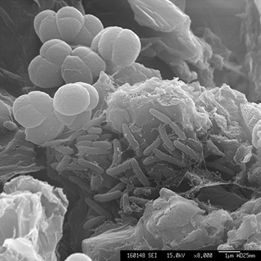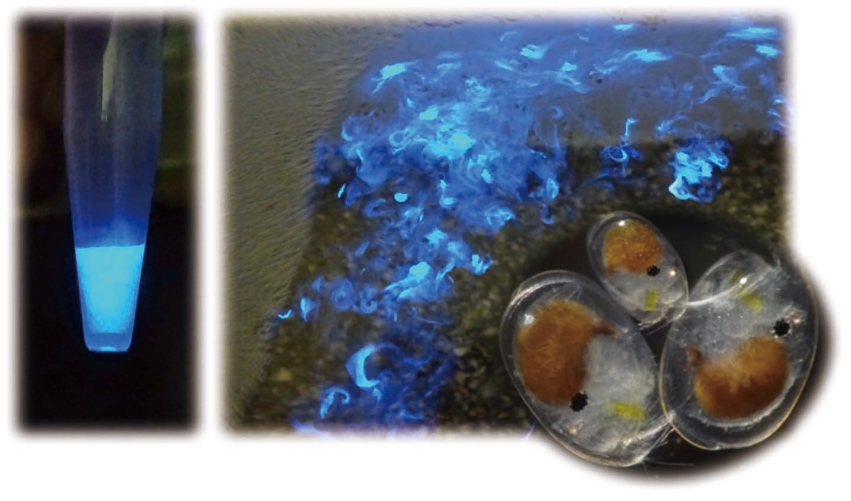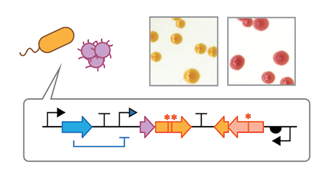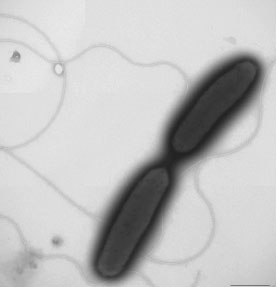

Diverse microbial energy metabolisms in anaerobic environments
Microorganisms have a surprisingly diverse variety of energy metabolisms and novel metabolic pathways are still discovered in recent years. Our research group conducts fundamental and applied studies on microbial energy metabolisms in anaerobic environments. Our main research targets are: (1) Energy metabolisms by electron exchange with solid conductive materials, (2) methane/acetate generation involved in corrosion of iron, (3) methanogenic degradation of crude oil and coal in deep subsurface environments, and (4) anaerobic wastewater treatment.

Figure: Symbiotic interaction of an organics-degrading bacterium (bacilli) and a methane generating archaeon (cocci) based on electron exchange via solid conductive materials.
Research of Novel Bioluminescence Systems
Molecules (luciferase and luciferin) involved in bioluminescence are widely used as tools for gene expression monitoring, in vivo imaging analysis, and various assays. Until today, various luciferases and luciferins have been identified from various animals, such as firefly (Hotaru) and Cypridina (Umihotaru). However, there are still a lot of unknown or poorly studied luminous organisms all over the world. Especially, luminous marine animals have much greater diversity than the terrestrial species. Thus, we are trying to find and understand novel bioluminescence systems for a development of game-changing tools.

Figure : in vitro reconstitution of Cypridina bioluminescence (left)
and natural luminescence of Cypridia (right).
Engineering biosynthetic pathway for the microbial production of high-value chemicals
Synthetic biology and metabolic engineering are promising fields that provides methodologies for microbial production of useful compounds. The target product is not limited to natural chemicals discovered in nature; non-natural chemicals could also be "bio"-synthesized by engineered enzymes that acquired new functions. However, novel biological functions engineered in the laboratory are often weak and unstable, which becomes an obstacle for further engineering and applications. Our group are developing genetic engineering tools and methodologies for microorganisms to accelerate the construction of non-natural biosynthetic pathways in the laboratory.

Figure: Illustration of Engineering biosynthetic pathway
for the microbial production of high-value chemicals.
Analysis of microbiota of indigo fermentation and its function
Although a high risk of contamination is associated with ambient bacteria during fermentation, the fermentation fluid maintains a reduced state for up to 6 months on average. However, the mechanisms underlying the occurrence of indigo reduction in a short period and the maintenance of reduced state in the indigo fermentation fluid by the microbiota over such a long period remain unclear. We study on the changes of microbiota during occurrence of indigo reduction at the initiation of the fermentation. We also study on microbiota on long-lasting (longer than 6 months) indigo fermentation fluids. In addition, we attempted to identify the characteristics and dynamics of the microbiota in the initiation of indigo reduction and the long-lasting indigo fermentation fluids in a reduced state under natural fermentation conditions in the open air.

Figure : Indigo-reducing bacteria, Amphibacillus indicireducens strain N214
isolated from indigo fermentation fluid (> pH10).




























